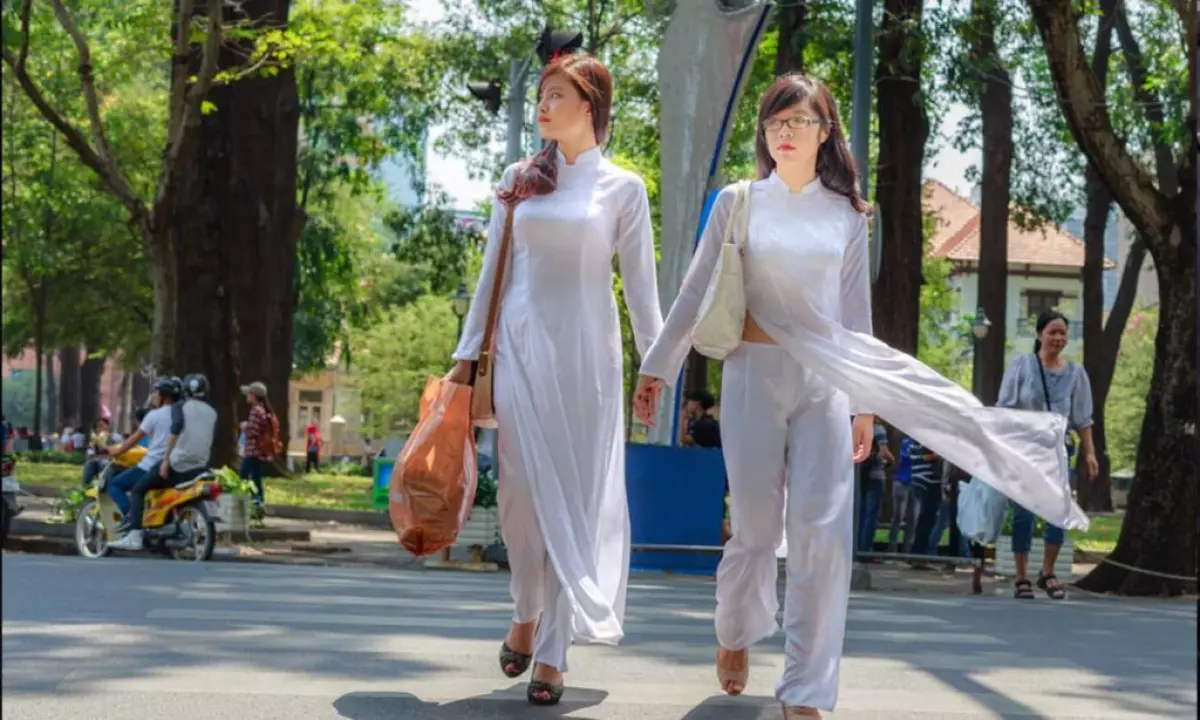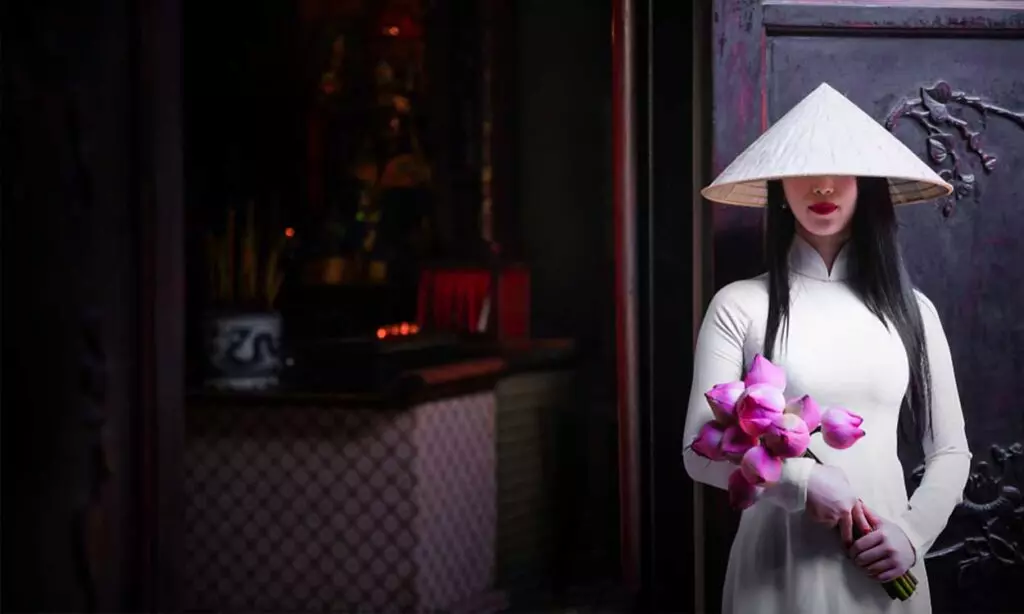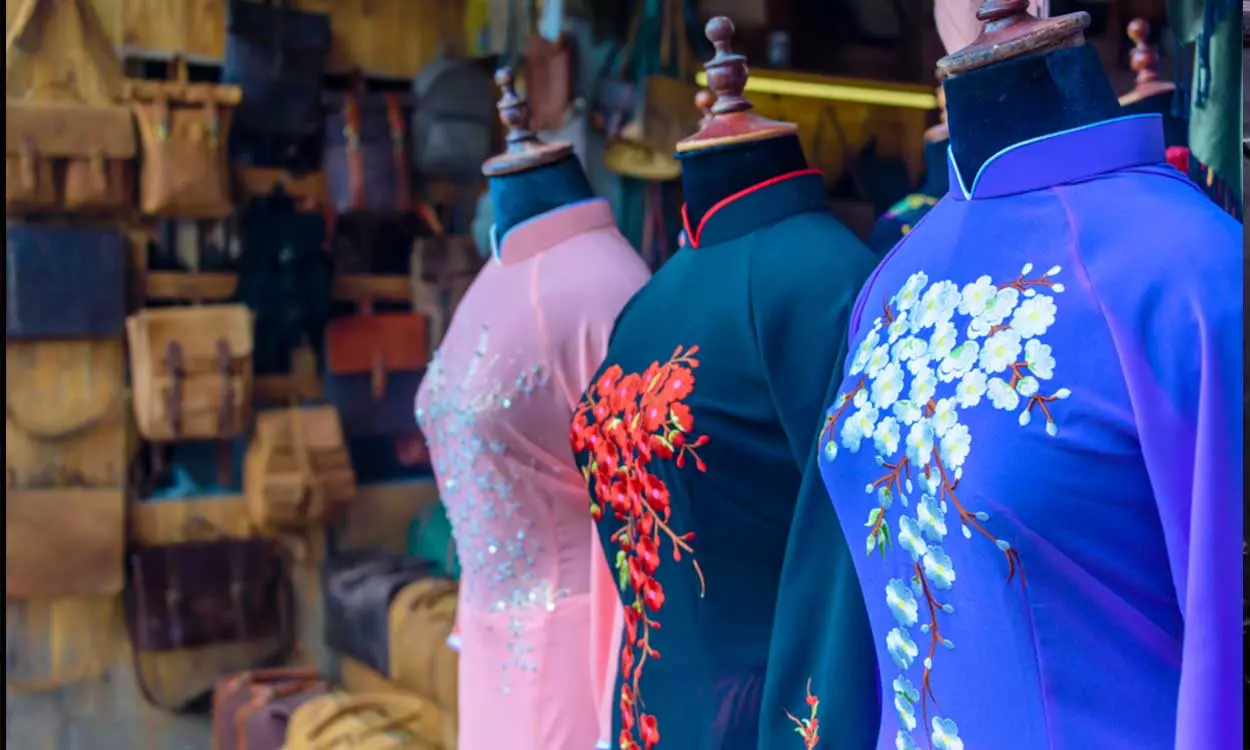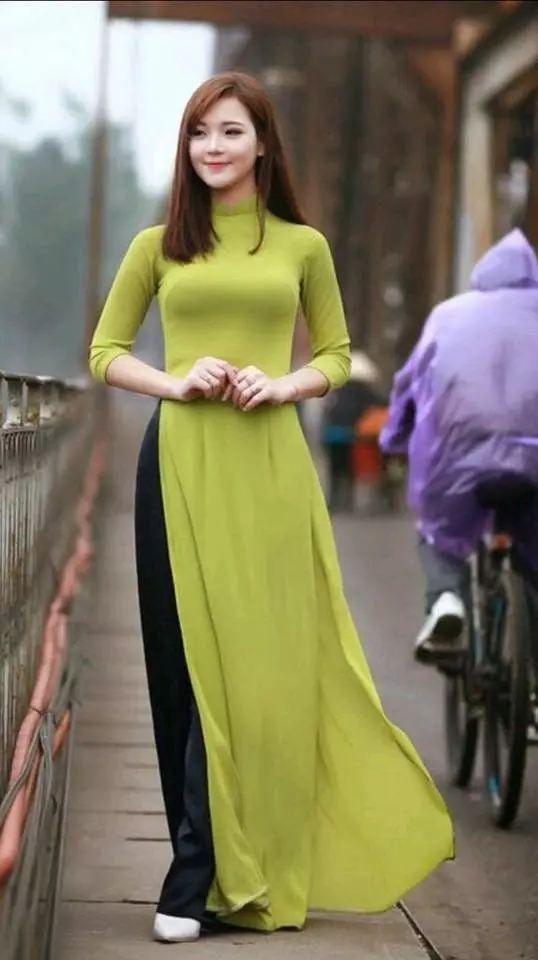 The Vietnamese national dress "Ao Dai" is a symbol of feminine grace and the dignity of the Vietnamese people.
The Vietnamese national dress "Ao Dai" is a symbol of feminine grace and the dignity of the Vietnamese people.
The Ao Dai, which translates to "long shirt" in Vietnamese, is not just a piece of clothing. It is a cultural icon that represents elegance and grace. This traditional dress, worn with pants, has stood the test of time and remains a significant part of Vietnamese heritage.
Ao Dai Dress Innovations: Modern vs. Traditional Ao Dai

Over the years, the Ao Dai has undergone various modifications, blending tradition with modern aesthetics. Let's explore the key differences between the traditional and modern Ao Dai.
1) Traditional vs. Modern Fit
The traditional Ao Dai features a loose and boxy appearance, making it convenient for everyday wear. On the other hand, the modern Ao Dai embraces a tight-fitting silhouette with two slits on the sides, allowing for ease of movement and showcasing the wearer's beauty. For special occasions or stunning photographs, having an Ao Dai tailor-made to your measurements ensures a perfect fit and enhances your overall appearance.
2) Colors Reflecting Status and Age
In the past, the traditional Ao Dai adhered to societal norms, featuring sophisticated and understated colors. However, the modern Ao Dai breaks free from these restraints and embraces a wide range of colors that signify status and age. Young girls opt for simple white Ao Dai, symbolizing innocence, while high school girls often wear white Ao Dai as part of their uniform. Elder but unmarried girls prefer soft-toned colors, while older married women gravitate towards vibrant and darker shades.
3) Comfort and Breathability

The modern Ao Dai prioritizes comfort and breathability, especially in the tropical climate of Southeast Asia. Made from silk, lace, or other breathable fabrics, the modern Ao Dai ensures that the wearer remains comfortable even in hot weather. In contrast, the traditional Ao Dai featured multiple layers of fabric, which might have been less suitable for the region's climate.
4) From Imperial Garment to Everyday Wear
While the traditional Ao Dai was once reserved for the imperial family and government officials, it has now become a part of daily life for people of all financial backgrounds in Vietnam. It is also commonly worn as a uniform by employees of various businesses, representing a sense of unity and national identity.
Ao Dai for Men: Embracing Tradition on Special Occasions
Although the Ao Dai was historically worn by both men and women, it has predominantly become a garment worn by women in modern times. There are a few reasons behind this shift:
- Modern versions of the Ao Dai are often associated with delicacy and femininity, making them more widely accepted in women's fashion.
- Men perceive the Ao Dai as less practical for everyday wear, despite the looser fit of the men's version compared to the women's.
However, during significant events such as weddings, funerals, and Tet (Vietnamese New Year) celebrations, many men choose to don the Ao Dai as a way to honor tradition. In recent years, there has been a growing movement to promote the cultural significance of men wearing the Ao Dai, with various groups and organizations organizing events to showcase men dressed in this charming attire. Some Vietnamese state officials even choose to wear the Ao Dai when representing their country at international meetings.
The History of Ao Dai Dress: A Fusion of Cultures

While the Ao Dai is an iconic representation of Vietnamese identity and the delicacy of women, its modern form is a result of significant foreign influences. The term "Ao Dai" originated during the 18th century Nguyen dynasty when Chinese-style garments were mandated. It referred to a unique dress worn exclusively by the Nguyen Lords in Hue as a symbol of their status.
During the 20th century, the Ao Dai underwent several transformations. In the 1920s and 1930s, influenced by French colonialism, a Vietnamese artist named Cat Tuong (or Le Mur) blended Western dress styles with the traditional Ao Dai, giving rise to a more modern version. The 1950s saw further modifications, such as the tight-fitting style introduced by Madame Nhu, the sister-in-law of President Ngo Dinh Diem. Her design, featuring a boat-neck, faced scrutiny for its sensuality but ultimately became an integral part of the Ao Dai's evolution.
Ao Dai in Modern Times: Versatility and Cultural Pride

Today, the Ao Dai comes in various colors, designs, lengths, and collar styles. It serves not only as everyday attire for women but also holds special significance during weddings, Tet celebrations, and other ceremonial occasions. Certain colors of the Ao Dai hold deep meaning and are reserved for prayer and ritual ceremonies, with blue, purple, and brown being popular choices.
Furthermore, the Ao Dai is commonly worn as a uniform by civil servants, tour guides, hotel staff, and high school girls, reinforcing a sense of unity and identity in different fields.
Ao Dai's Cultural Impact
The Ao Dai's influence extends beyond the realm of fashion. It has made an impact on various aspects of Vietnamese culture:
Impact on Architectural Design:
The exterior design of the 65-floor Lotte Centre in Hanoi draws inspiration from the flowing elegance of the Ao Dai, showcasing its cultural significance even in modern architecture.
A Representative of Home:
In California, the Vietnamese community organizes the Ao Dai Festival every year as a display of national pride. During this event, people dress up in Ao Dai to demonstrate their love and admiration for Vietnam. The Ao Dai represents the Vietnamese people's adaptability and cultural fusion, blending Cham and Western influences to create a truly unique garment. Those who wear the Ao Dai do so with grace and respect for their heritage.
We hope that delving into the history and evolution of the Vietnamese Ao Dai has provided you with a deeper appreciation for this timeless dress. The Ao Dai encapsulates the beauty, elegance, and cultural richness of Vietnam, serving as a testament to the enduring legacy of this incredible nation.


















